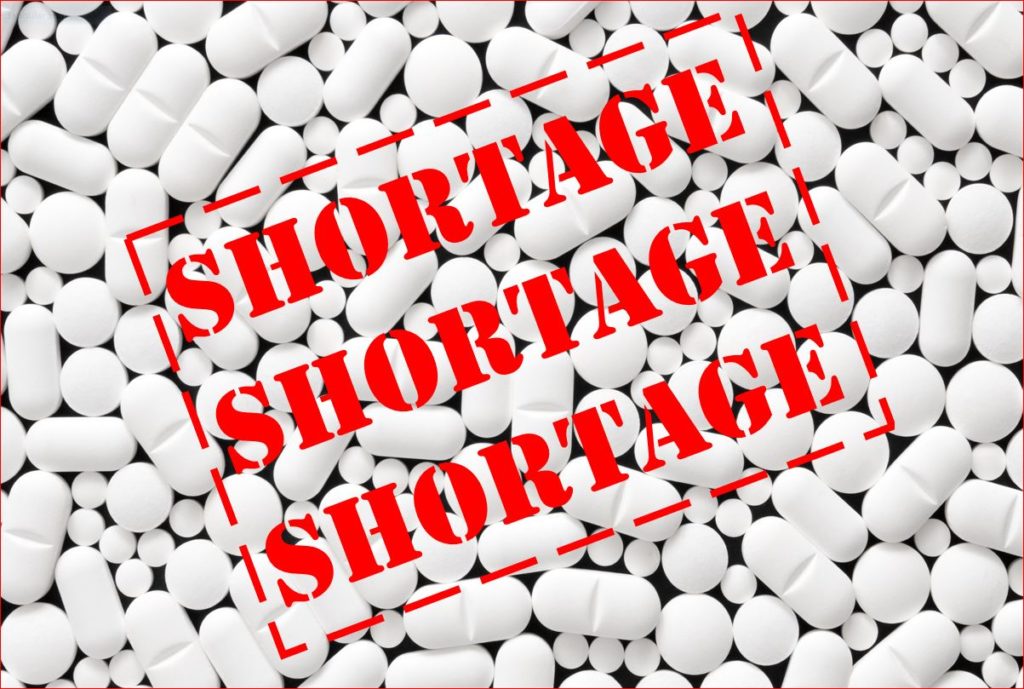Medication Shortages

Drug shortages. They’re rampant! While this seems like a new phenomenon — truth is, drug shortages have been with us for more than a decade. Right now, they seem worse than ever.
If you’re one of our regular patients, please know we do everything in our power to stay ahead of the shortages but sometimes drug scarcity bites us. Every night we scour suppliers with you — specifically YOU — in mind. For many prescriptions, we know when your refill will come due and we’re ordering what we can and earmarking it just for YOUR prescription. If we see a shortage beginning to show up in the pipeline, we’re ordering larger sizes when our budgets allow (and without stockpiling inventory) so that you don’t feel the pinch. We try; we really do. Amidst all of this, we’re fielding 15 – 20 calls a day from patients who are new to us wanting to know if we have XYZ drug.
Why so many drug shortages? There are a few reasons:
1) INCREASED DEMAND. This is true for antibiotics such as Amoxicillin, pain/fever reducers such as Tylenol, stimulant medications like Adderall, and diabetes medications that may be used for weight loss such as Ozempic or Trulicity. When demand for a medication far exceeds what the manufacturer anticipated, they begin to produce more but the process isn’t as fast as you might think. When a shortage continues for a period of time, people start reaching for alternate medications. The manufacturers of the alternate medication didn’t anticipate the increased demand and then those drug supplies dry up as well. (FYI the Adderall shortage is anticipated to continue for a year!) Why? Keep reading!
2) RAW MATERIAL SHORTAGE. Every medication starts out like a recipe from your kitchen. Multiple ingredients are needed from which the medication is produced. Almost 100% of the raw materials for medication come from China or India. Once the raw materials are sourced, they’re shipped to a plant for the medication to be manufactured. Even medications that are manufactured in the US or UK begin as raw materials that must be sourced from China or India. When China or India struggle, we struggle. Our supply chains are long with far too many steps where things can go wrong.
3) DISTRIBUTION DELAYS. Mostly these are short-term problems that are corrected within a few weeks. Weather, labor shortage, transportation issues all can play a role.
4) MANUFACTURER STOPS PRODUCTION. This happens most commonly with generics. A manufacturer chooses to stop producing a particular medication. They’re required to give advance notice to the FDA. Even so, this puts pressure on other manufacturers of the same medication to ramp up additional production. Go back to #2 and #3.
4) QUALITY ISSUES. Our FDA routinely inspects plants even in other parts of the world. If they find quality issues, production stops. Sometimes those quality issues are resolved quickly but other times they are wide in scope and the fix requires significant time. If one plant is down, other manufacturers of the same medication may have capacity to increase production but this takes time. Go back to #2 and #3.
This isn’t a problem that will go away anytime soon. In the end, please know that we’re doing our best to keep you covered and taken care of. If you have questions, we’re here to answer them. Thank you for putting your faith and confidence in us!
